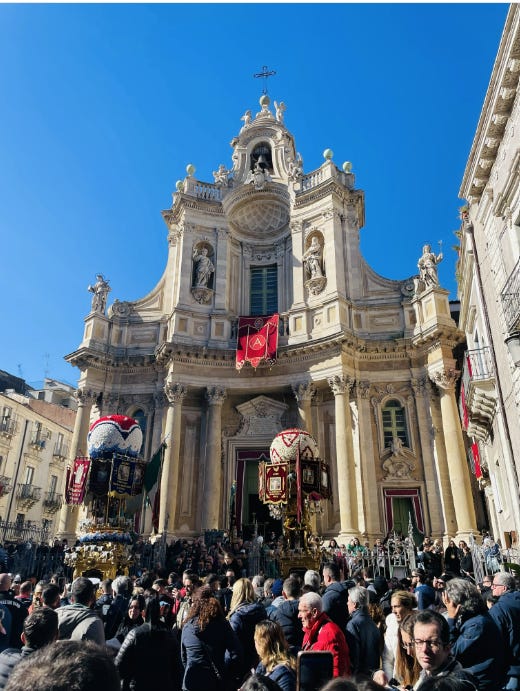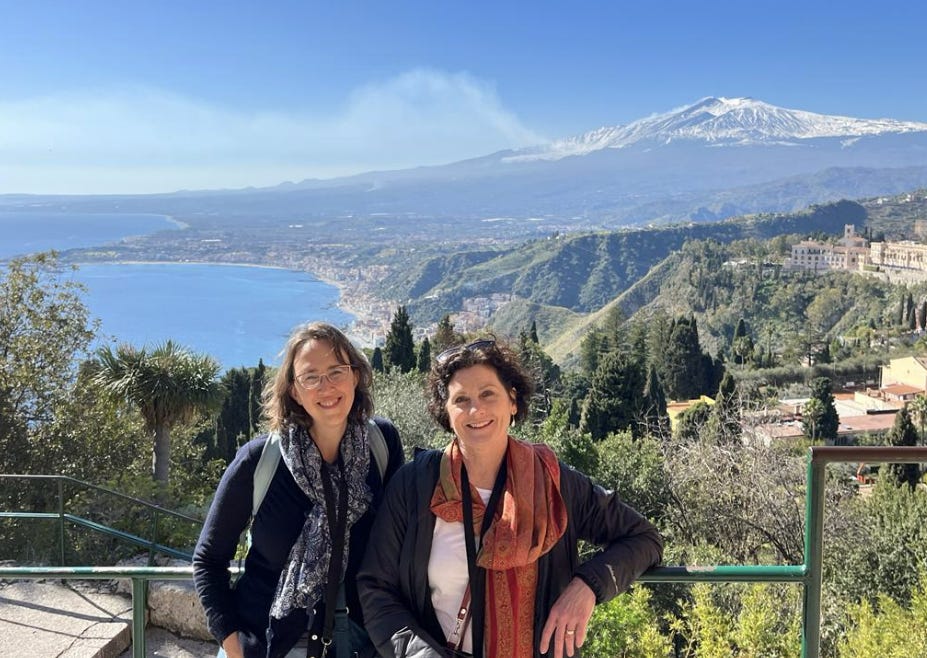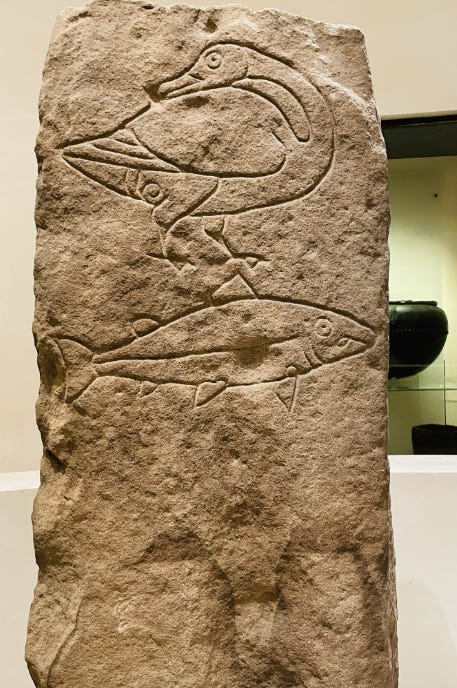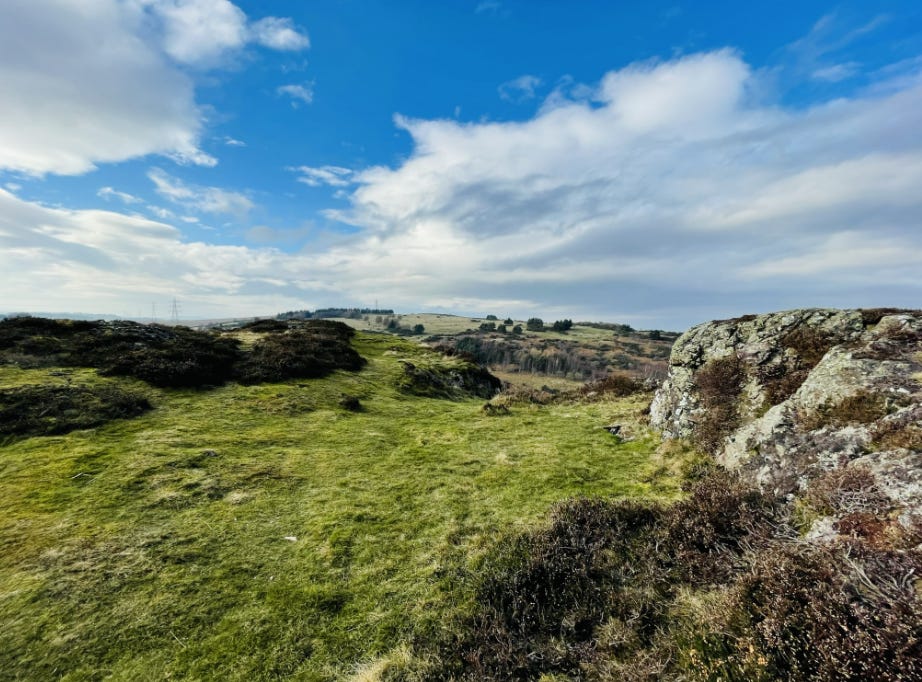Writing the biweekly letters started as a way for me to force myself to sit down and metabolize all of the changes coming at me. But I see that work differently now after reading Sharon Blackie’s If Women Rose Rooted (which I wrote about it in my last biweekly letter). It’s not just about my own internal process but also sharing those letters with others who may need to hear what it’s like to go through a major life transition, whether it’s chosen or thrust upon them.
Blackie explains, referring to the “Heroine’s Journey,” which is quiet different from the so-called “Hero’s Journey” that Joseph Campbell immortalized,
The Heroine’s Journey for these times is a journey out of the Wasteland. Each of us has our own unique set of stories to tell: the story of the years we spent in the Wasteland, the story of our awakening, and then the story of the path we took out of it. Telling those stories helps us to understand ourselves – not just the place that we’ve come from, but where we might now be heading.
She encourages women to tell their stories because we need more roadmaps of transformation, or escape from the “Wasteland,” which she describes as our patriarchal culture that devalues women and the feminine, as well as the paved-over, built-up environments that have disconnected us from the natural world that is our true home.
I’ve been hungry for such stories and have certainly been influenced by books like Frances Mayes’s Under the Tuscan Sun and Elizabeth Gilbert’s Eat, Pray, Love. I’ve also picked up other bits and pieces here and there, learning how other women reimagined themselves. We need as many of these stories as possible because there is no one way to go through a major life transition. And taking that windy road can feel lonely. Hearing other’s stories, though, allows us to see the range of possibilities.
Now on to travel news. Since I last wrote to you, I had a final week in Sicily and then got on a plane headed for chilly—and mostly gray—Edinburgh.
Sicilian Send-Off
I couldn’t have asked for a better final week in Catania. For starters, I was able to see part of the four-day Saint Agatha festival, which is one of the largest religious celebrations in the world. It reminded me a bit of Mardi Gras, but with church bells. The “floats” are massively heavy candelore (or chandelier-like things) and carried by a team of men. They are so heavy that they can only move about 20 feet at a time, then they stop and rest. You never know when the whistle will blow and they will start charging forward. Then everyone scatters. It was thrilling to see.
Each of the eleven or so associations (mostly workers’ unions), which are a bit like the krewes of New Orleans’ Mardi-Gras, carried a massive candelora and was accompanied by a brass band and drums. The music was just as good as what you hear in New Orleans. I posted a bunch of videos on Instagram.
Another highlight of my last week was visiting with my friend Etta Madden. She is a specialist in American women writers in Italy, and she makes frequent trips there, which you can read about in her newsletter, “All Things Italy.” We met several years ago at a Constance Fenimore Woolson Society conference and saw each other many times at conferences over the years. We’ve also spent time together as part of the Biographers International Organization. So it was a real treat to get to hang out with her in Catania, especially as she taught for a semester at the university there in 2019. I enjoyed meeting her friends and getting to see the St. Agatha fireworks from the rooftop party that one of them invited us to.
On my last full day in Sicily, Etta and I made a trip to Taormina, of White Lotus fame (which I haven’t seen yet). We headed out with two women from Slovenia from Etta’s B&B and picked up two more solo women travelers along the way. One was a young woman from Israel who asked if she could tag along as we made the train ride up the coast. This was her first time traveling alone. She had just finished her exams and decided to treat herself to a short getaway to Sicily. I love that!
For a thousand or so years, before White Lotus, Taormina was best known as the site of one of the most spectacular Greek amphitheaters in Sicily. I actually liked the one in Catania better, nestled as it was into the city, with cats climbing up the tiers of stone stairs and apartment buildings overlooking it. I’m always captivated by that juxtaposition between the ancient and the modern. But the theater in Taormina certainly has all the others beat in terms of views.
Edinburgh
I have to say that I wasn’t as shocked as I thought I might be by the transition to winterish Scotland after sunny Sicily. When I climbed down the stairs onto the tarmac and met the bracing wind, I had a curious sense of returning from exotic lands to a place that felt more like home. Since my arrival three weeks ago, there have been a couple of days of jacket-piercing wind, but the sun has come out a fair bit, and I enjoy the cool, crisp air.
For the first week here, I was pretty much in a daze. I had the same experience when I arrived in Sicily, which I chalked up to all of the new sensations. Edinburgh wasn’t quite as overwhelmingly new, but I think it just takes my mind a while to catch up to my body, especially the more I travel. These last two months, I’ve often woken up uncertain of where I was as I came out of dreamland. It’s a rather disorienting feeling.
Victoria Street, Ediburgh.
Overall, I’ve settled in well here. I’ve been doing research on my Boyd ancestors who came from Scotland in the late 1860s, only four generations back. It’s been utterly fascinating! And I’ve taken a deep dive into Scottish history, beginning with the National Museum of Scotland. They use 6 floors to tell the history of Scotland, and I spent 3.5 hours on my first visit on the first floor alone.
I was fascinated by the geology of this land and how it formed. First of all, I was shocked to learn that Scotland and England are chunks of entirely different continents that drifted together and married, so to speak, although uneasily, as I will learn more about on the upper floors. I’ve already seen from the history of the Boyd clan that Scotland was often at war with England. In fact, the Boyds lost their land and title after the disastrous Battle of Culloden in 1746, which destroyed many of Scotland’s clans. Outlander fans will know what I’m talking about here.
From the National Museum of Scotland, Pictish designs on a stone dating from 300-500 A.D. The Picts were the tribe that inhabited northern Scotland in Roman times.
I’m a little embarrassed, actually, that most of what I know of Scottish history comes from the Outlander series. I’m trying to rectify that! In the meantime, I’ve been curious about Diana Gabaldon’s inspiration for her books, and I was shocked to discover that not only is there no stone circle that matches the description she provides for Craig Na Dun, but she hadn’t even visited Scotland before she wrote the first book. She says on her website, “I did Outlander entirely from library research. Since at the time, I thought the book was purely for practice, I hardly thought I could tell my husband I had to go to Scotland to do research.” (Why not?) Apparently she used part of her advance to make a two-week trip to Scotland and was relieved to find that her descriptions were pretty accurate.
Getting to Know Edinburgh
When I first arrive in a new place, I like to take a walking tour to get oriented. The one I took in Edinburgh was quite nice, and the tour guide, a young man with a Ph.D. in history, was certainly very knowledgeable. But when he pointed up the road to the Walter Scott memorial and said that Scott invented the historical novel genre, I had to mention to him later that the Scottish writer Jane Porter had influenced Scott, and surely she deserves the honor of having invented the genre. (I knew this from the work of Devoney Looser, who has written a monumental biography of the Porter sisters, who were both well-known writers.) I hope he ran home and did some research and added a mention of Porter is in tour, but somehow I doubt it.
I don’t like to limit myself to tourist activities, so I’ve also been scouring local events and found a few that interested me. The first was a creative writing workshop at the National Library of Scotland where they brought items from the archives and for us to use as inspiration. It was a lovely group of mostly women, and the leader was a very interesting American writer, originally from Iran, Marjorie Lotfi.
The other event was a special evening tour with the curator of an exhibit at the City Art Centre on early women photographers and filmmakers. It was fascinating hearing the story of how it all started 12 years ago when she was amazed to stumble on a fascinating photograph at a bus shelter on the island of Barra, way off the coast of Scotland. She found out it was by Margaret Fay Shaw, an American who had come to Scotland in the 1920s and never left. She documented a fading way of life on the Hebrides in her photographs. The curator went on to discover 13 more women who had been documenting life in Scotland and even gaining recognition for their work. All had been forgotten. One was rediscovered by an antique dealer who opened the drawer of an old dresser to discover hundreds of photographs, which he donated to a local historical organization. I love stories like this!
I wrote a lot more about the magic Scotland is working on me in my last post, so I won’t repeat myself here. But I will say that I’ve decided to come back to Edinburgh in late April. I’m curious to see what spring and early summer are like here.
Until then, here is a picture from my day in the Pentland Hills, just south of Edinburgh. It’s a magical place, and I’m excited to explore more of Scotland as I head west later this week and up to the Inverness and the Highlands next week.
Much love and good wishes from my life on the road! Thank you as always for reading and sharing your thoughts and questions with me. I always love hearing from you!!
Until next time,
Anne










Thanks, Anne! Stay healthy!
So proud of you! Can't wait to hear about the Boyds in Scotland. I also have a family line, McFarlands, who lived in the highlands around Arrochar.